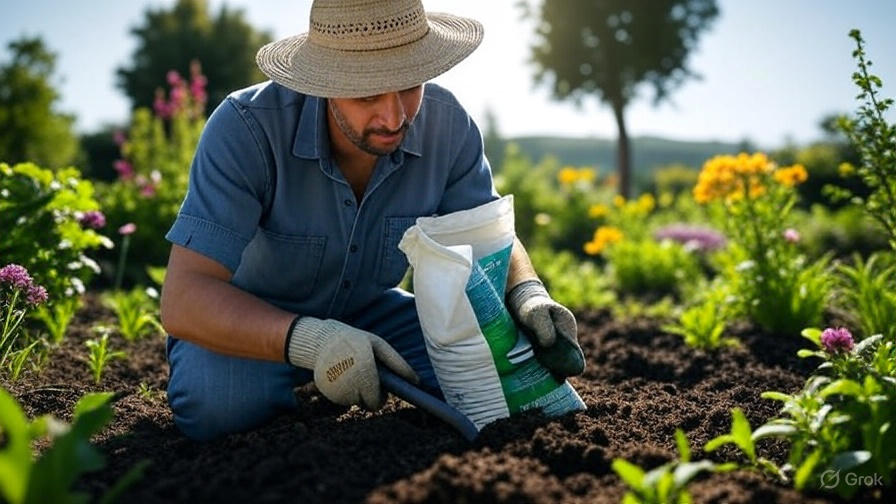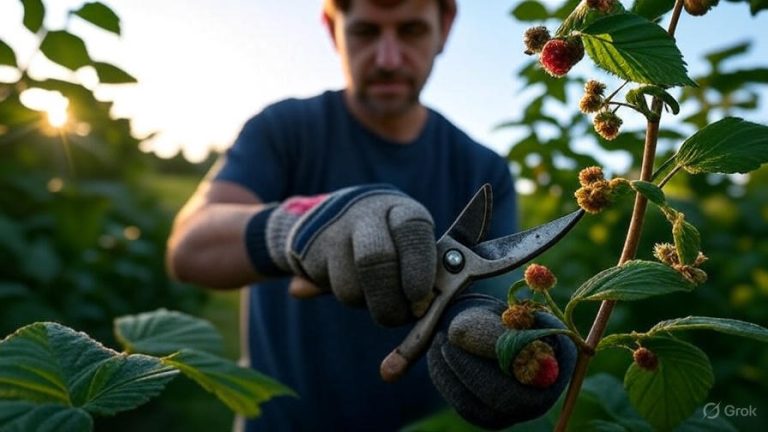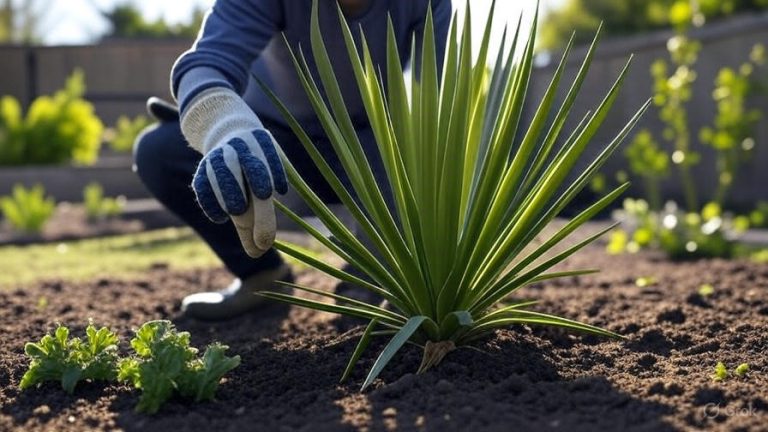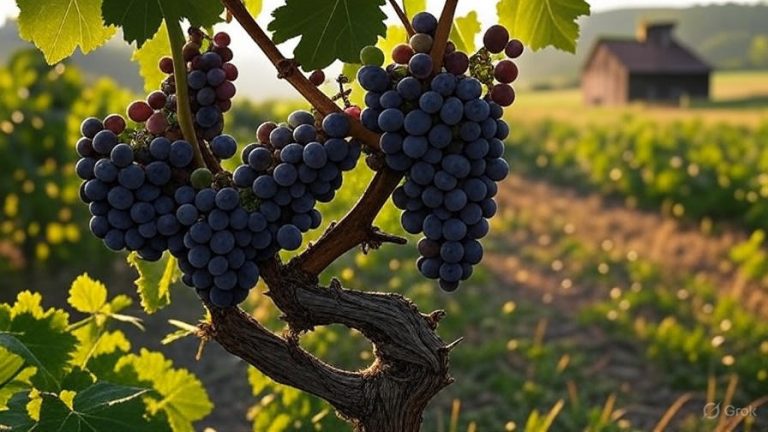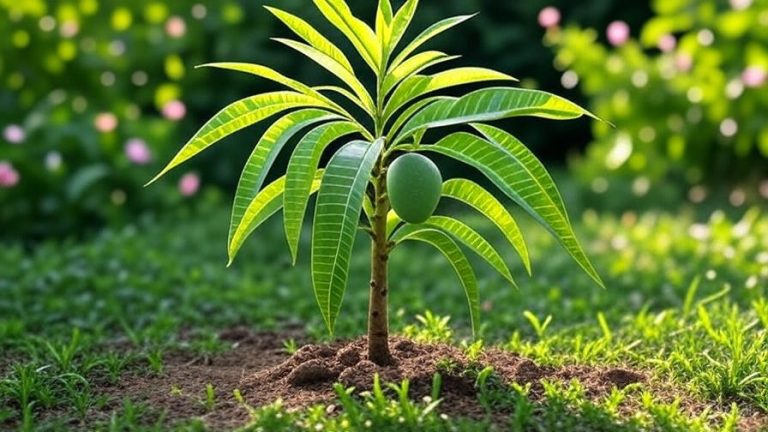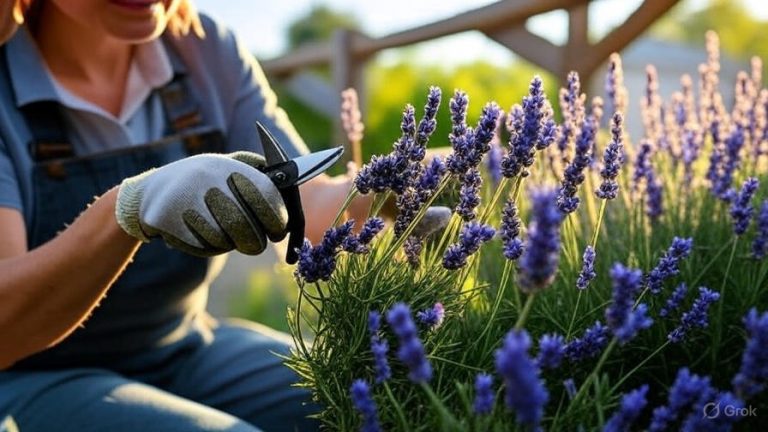How to Add Iron to Soil?
Plants need iron to thrive, yet countless gardeners struggle with iron-deficient soil that leaves their greenery yellow, stunted, and struggling. Iron deficiency affects millions of gardens worldwide, turning what should be vibrant landscapes into disappointing displays of chlorotic plants.
The good news? You can easily correct iron deficiency in your soil with the right knowledge and techniques. This comprehensive guide walks you through everything you need to know about adding iron to soil, from identifying deficiency symptoms to applying effective treatments that restore your garden’s health.
Recognizing Iron Deficiency in Your Garden
Iron deficiency shows up in distinctive ways that make it relatively easy to identify. Young leaves turn yellow while their veins remain green, creating a striking contrast that gardeners call interveinal chlorosis. This yellowing typically starts with the newest growth at the top of plants, then spreads downward as the deficiency worsens.
Plants experiencing iron shortage often display stunted growth, reduced flowering, and poor fruit production. Vegetables like tomatoes, peppers, and beans become particularly susceptible, while ornamental plants lose their vibrant colors and healthy appearance.
The symptoms can sometimes confuse gardeners because they resemble nitrogen deficiency. However, iron deficiency specifically targets new growth first, while nitrogen deficiency affects older leaves initially. This distinction helps you accurately diagnose the problem and apply the correct treatment.
Why Iron Becomes Unavailable in Soil
Soil actually contains plenty of iron in most cases – the problem lies in its availability to plants. Several factors prevent plants from accessing the iron that surrounds their roots.
High soil pH represents the primary culprit behind iron unavailability. When soil pH exceeds 7.0, iron transforms into forms that plants cannot absorb. Alkaline conditions, common in many regions, lock up iron and create deficiency symptoms even when iron levels appear adequate in soil tests.
Poor drainage creates another barrier to iron uptake. Waterlogged soils develop anaerobic conditions that alter iron chemistry, making it unavailable to plant roots. Heavy clay soils often compound this problem by retaining excess moisture and limiting oxygen flow.
Cold soil temperatures slow down iron absorption significantly. Spring gardens often show iron deficiency symptoms that resolve naturally as soil warms up. This temporary deficiency can still stress young plants during critical growth periods.
Excess phosphorus in soil can also interfere with iron absorption. Over-fertilization with phosphorus-rich fertilizers sometimes creates secondary iron deficiency by blocking the plant’s ability to take up available iron.
Testing Your Soil for Iron Content
Before adding iron to your soil, conduct a proper soil test to understand your current iron levels and soil conditions. Most cooperative extension offices offer comprehensive soil testing services that include iron analysis along with pH, nutrient levels, and organic matter content.
Home soil test kits provide quick results for basic parameters like pH, but they rarely include reliable iron testing. Professional lab analysis gives you accurate iron measurements and specific recommendations for your soil type and growing conditions.
When collecting soil samples, gather material from multiple locations in your garden at a depth of 4-6 inches. Mix these samples together to create a representative sample that reflects your garden’s overall condition. Avoid sampling immediately after fertilizing or during extremely wet or dry periods.
The soil test results will show both total iron content and available iron levels. Total iron indicates how much iron exists in your soil, while available iron measures what plants can actually access. This distinction proves crucial because high total iron with low availability requires different treatment than genuinely iron-poor soil.
Natural Methods to Increase Iron Availability
Organic matter plays a vital role in improving iron availability in soil. Compost, well-aged manure, and leaf mold help chelate iron, keeping it in forms that plants can readily absorb. These organic materials also improve soil structure, drainage, and microbial activity – all factors that enhance iron uptake.
Coffee grounds provide a gentle source of iron while slightly acidifying soil. Fresh coffee grounds work best when composted first, as raw grounds can temporarily tie up nitrogen. Used coffee grounds from your daily brew make an excellent addition to compost piles or can be worked directly into soil around acid-loving plants.
Sulfur applications help lower soil pH gradually, improving iron availability in alkaline soils. Elemental sulfur takes several months to affect soil pH, making it ideal for long-term soil improvement. Apply sulfur in fall for best results, allowing winter moisture to activate the pH-lowering process.
Organic fertilizers like fish emulsion, kelp meal, and bone meal contribute iron along with other essential nutrients. These slow-release options feed soil microorganisms that help make iron more available to plants. The biological activity they promote creates a healthier soil ecosystem overall.
Mulching with organic materials helps maintain consistent soil moisture and temperature while slowly adding iron as the mulch decomposes. Pine needles, shredded leaves, and bark mulch all contribute iron while improving soil conditions.
Commercial Iron Supplements for Quick Results
When plants show severe iron deficiency symptoms, commercial iron supplements provide faster relief than organic methods alone. Several types of iron supplements work effectively, each with specific advantages for different situations.
Iron sulfate (ferrous sulfate) represents the most common and cost-effective iron supplement. This readily available form dissolves quickly in water and provides immediate iron to plant roots. Iron sulfate works best in neutral to slightly acidic soils and can be applied as a soil drench or foliar spray.
Chelated iron products offer superior performance in alkaline soils where regular iron sulfate becomes unavailable. These specially formulated supplements keep iron in plant-available forms even in high pH conditions. EDTA, DTPA, and EDDHA chelated iron products each work best in specific pH ranges.
Iron chelate EDDHA works most effectively in highly alkaline soils with pH above 7.5. This powerful chelating agent maintains iron availability even in challenging conditions that render other iron supplements useless.
Granular iron supplements provide slow-release nutrition that lasts longer than liquid applications. These products work well for established plants and can be incorporated into soil before planting for preventive treatment.
Application Methods That Actually Work
Soil application remains the most effective method for correcting iron deficiency in most situations. Dissolve iron sulfate in water according to package directions and apply directly to soil around affected plants. Water thoroughly after application to help iron move into the root zone.
For severe deficiency cases, foliar application provides rapid symptom relief while soil treatments take effect. Mix iron sulfate or chelated iron with water and spray directly on plant leaves during cool morning or evening hours. Avoid foliar applications during hot, sunny periods that can burn treated foliage.
Band application works well for row crops and vegetable gardens. Apply iron supplement in bands along planting rows, then incorporate into the top few inches of soil. This method concentrates iron where plant roots will encounter it most readily.
Drip irrigation systems allow precise iron application through fertigation. Dissolve water-soluble iron supplements in irrigation water and apply through drip lines or soaker hoses. This method ensures even distribution and prevents iron waste through runoff.
Timing Your Iron Applications
Early spring application gives plants access to iron during their active growing season. Apply iron supplements just before or as new growth begins, when plants can best utilize additional nutrients.
Fall applications work well for perennial plants and established gardens. Iron applied in fall moves into the soil profile over winter and becomes available as plants break dormancy in spring.
Multiple small applications prove more effective than single large doses. Split your total iron application into 2-3 smaller applications spaced 4-6 weeks apart during the growing season.
Avoid applying iron immediately before heavy rains that can wash supplements away before plants absorb them. Light watering after application helps move iron into soil without causing excessive runoff.
Preventing Future Iron Deficiency
Long-term soil health prevents iron deficiency more effectively than repeated treatments. Focus on maintaining proper soil pH, improving drainage, and building organic matter content through regular compost additions.
Regular soil testing every 2-3 years helps you monitor iron levels and soil conditions before problems develop. Trend analysis from multiple tests reveals whether your soil management practices are working effectively.
Crop rotation and cover cropping improve soil biology and iron cycling. Legume cover crops fix nitrogen while improving soil structure, creating conditions that enhance iron availability naturally.
Avoid over-fertilizing with phosphorus, which can interfere with iron uptake. Follow soil test recommendations for phosphorus applications rather than using high-phosphorus fertilizers routinely.
Common Mistakes That Waste Time and Money
Many gardeners apply iron supplements without testing soil pH first. Iron supplements prove ineffective in highly alkaline soils without addressing the underlying pH problem. Test and adjust soil pH before applying iron for best results.
Over-application of iron can damage plants and create nutrient imbalances. Follow label directions carefully and avoid the “more is better” mentality that leads to excessive application rates.
Applying iron during drought stress reduces effectiveness significantly. Plants under water stress cannot absorb nutrients efficiently, making iron applications less beneficial. Ensure adequate soil moisture before and after iron applications.
Using the wrong type of iron supplement for your soil conditions wastes money and delays results. Match iron supplement types to your specific soil pH and conditions for optimal effectiveness.
Monitoring Plant Response and Adjusting Treatment
New growth provides the best indicator of treatment effectiveness. Look for green, healthy foliage on new shoots within 2-4 weeks of soil application. Foliar applications typically show results within days on treated leaves.
Take photos of affected plants before treatment to document improvement over time. Visual records help you evaluate treatment effectiveness and adjust future applications accordingly.
Continue monitoring plants throughout the growing season, as iron deficiency can recur during periods of rapid growth or environmental stress. Be prepared to make additional applications if symptoms reappear.
Soil retesting after one growing season reveals whether your treatments are improving soil iron availability long-term. Adjust your approach based on soil test results and plant performance.
Special Considerations for Different Plant Types
Acid-loving plants like blueberries, azaleas, and rhododendrons require special attention to iron nutrition. These plants prefer lower soil pH that naturally improves iron availability. Use sulfur to acidify soil around these plants while providing supplemental iron as needed.
Vegetable gardens benefit from preventive iron applications before planting. Work iron supplements into beds during spring preparation to ensure adequate iron availability throughout the growing season.
Fruit trees often show iron deficiency on new growth despite healthy-looking older foliage. Apply chelated iron to tree root zones and consider trunk injection for severe cases that don’t respond to soil applications.
Container plants face unique iron challenges due to limited soil volume and frequent watering. Use chelated iron supplements for container plants and consider adding organic matter to potting mixes to improve iron retention.
Lawn grasses rarely suffer from iron deficiency, but when they do, liquid iron applications provide quick greening without excessive growth. Apply iron to lawns during active growing periods for best results.
Building Healthy Soil for the Long Term
Sustainable iron management focuses on creating soil conditions that naturally maintain iron availability. This approach proves more effective and economical than repeated supplement applications.
Regular organic matter additions through compost, aged manure, and organic mulches improve iron cycling and soil health simultaneously. These materials feed beneficial microorganisms that help make iron more available to plants.
Maintain proper soil drainage through organic matter additions and avoiding soil compaction. Well-drained soils support healthy root systems that can access available iron more effectively.
Consider long-term pH management strategies that address the root cause of iron unavailability rather than just treating symptoms. Gradual pH adjustment through organic methods creates lasting improvements.
Your garden’s iron needs will change over time as soil conditions improve and plants establish healthy root systems. Regular monitoring and adaptive management ensure continued success with iron nutrition.
With proper diagnosis, appropriate treatments, and good soil management practices, you can overcome iron deficiency and create thriving plants that showcase vibrant, healthy growth. The investment in soil health pays dividends through reduced need for supplements and better overall plant performance in your garden.

